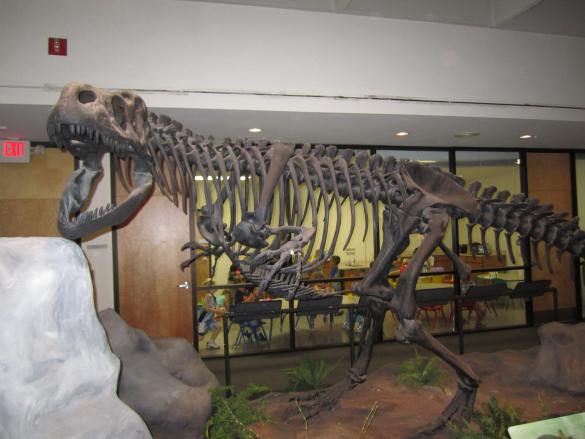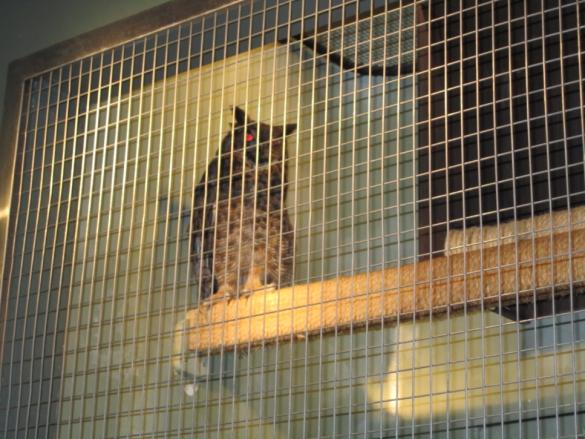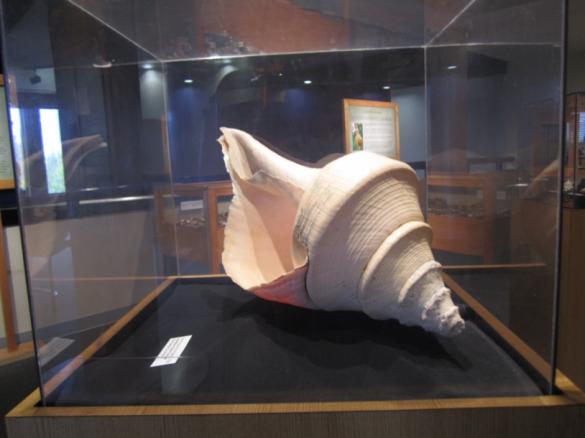By Kathleen Storey & Liliana Cerquozzi
Jacksonville is home to many museums in the Northeast Florida area, The Museum of Science and History (MOSH) being one of them. As two interns from The Cummer, we were given the opportunity to visit MOSH and explore its many exhibitions.
The first stop on our journey was “The Body Within,” where you enter through a larger than life mouth. Upon entering, you go through a “sensation station” and various other activities that allow you to play with your senses. You can smell different fragrances and try to guess what they are, and you can feel without seeing different objects and try to guess them as well. Also on display are preserved organs, allowing the viewer to behold what’s inside of them.
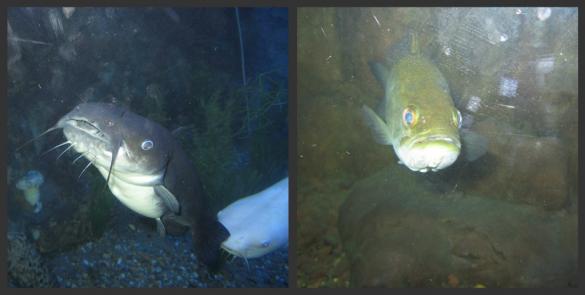 After exiting “The Body Within,” we made our way to “Water Worlds.” This exhibit is dedicated to our own St. Johns River. This exhibit was fully equipped with two large fish tanks whose inhabitants are native to the St. Johns River, such as these little guys pictured above. This exhibit gave an in-depth explanation on exactly why the St. Johns River is so polluted and why it is vital to preserve this river before it becomes extinct. Personally, neither of us even knew that a river could become extinct.
After exiting “The Body Within,” we made our way to “Water Worlds.” This exhibit is dedicated to our own St. Johns River. This exhibit was fully equipped with two large fish tanks whose inhabitants are native to the St. Johns River, such as these little guys pictured above. This exhibit gave an in-depth explanation on exactly why the St. Johns River is so polluted and why it is vital to preserve this river before it becomes extinct. Personally, neither of us even knew that a river could become extinct.
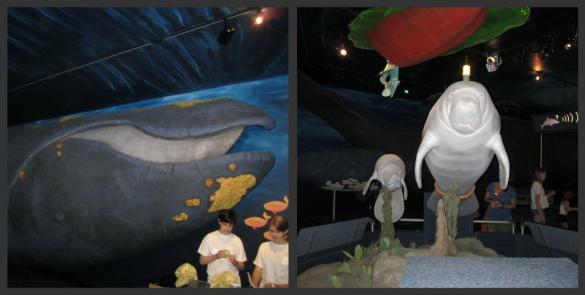 From there we entered “Atlantic Tails.” This exhibit housed a replica of a GIANT Right Whale and her calf where you could compare the size of their organs to your own. In here you could also see how the human’s bones work to move in comparison to a dolphin’s bones, the different migration patterns of different whales along the East Coast and other exciting facts about marine mammals.
From there we entered “Atlantic Tails.” This exhibit housed a replica of a GIANT Right Whale and her calf where you could compare the size of their organs to your own. In here you could also see how the human’s bones work to move in comparison to a dolphin’s bones, the different migration patterns of different whales along the East Coast and other exciting facts about marine mammals.
Passing by a fossil of an Allosaurus, we walked right into the “JEA Science Theater & Aqua Expo.” This exhibit was really interesting. It gave us information on how many gallons of water it takes to run the average household and just above an interactive demonstration, there’s a real-time counter that was displaying exactly how many gallons of water had been used in Jacksonville since 7 a.m. that morning. That to us stood out and gave viewers a first hand glance on why they need to do their part in conserving water.
Next door to the “Aqua Expo” was “Florida Naturalist’s Center” where some of Florida’s native wildlife (sadly no Florida Panthers) resides. A Great Horned Owl, a Barred Owl, a Screech Owl, some snakes, amphibians, and reptiles could be seen here. Of course MOSH’s famous opossum, Daisy May, was sleeping when we came to visit so we were not able to see her.
 We continued upstairs to the second floor where we entered “Savage Ancient Seas” where colossal fossils of turtles, bigger than a Smart Car, swam in the air. Right before the entrance to the Planetarium, a dedication to space exploration stood with large duplicated pictures of different galaxies from the Hubble Telescope and replicas of NASA space uniforms.
We continued upstairs to the second floor where we entered “Savage Ancient Seas” where colossal fossils of turtles, bigger than a Smart Car, swam in the air. Right before the entrance to the Planetarium, a dedication to space exploration stood with large duplicated pictures of different galaxies from the Hubble Telescope and replicas of NASA space uniforms.
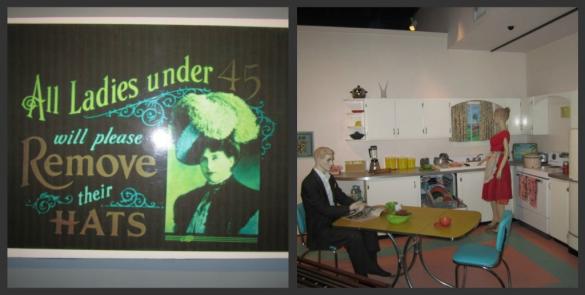 Across the way, the “Currents of Time” seemed to be our main priority with how interesting the exhibit was. It seemed like it was never ending journey through the history of Jacksonville. The walls were adorned with hundreds of historic facts about Jacksonville, which allowed us to learn some new and really interesting things about this city. From the types of clothing worn to the different architecture, “Currents of Time” truly depicted Jacksonville’s shift from the different eras, especially its literal rise from the ashes of the Great Fire of Jacksonville in 1901.
Across the way, the “Currents of Time” seemed to be our main priority with how interesting the exhibit was. It seemed like it was never ending journey through the history of Jacksonville. The walls were adorned with hundreds of historic facts about Jacksonville, which allowed us to learn some new and really interesting things about this city. From the types of clothing worn to the different architecture, “Currents of Time” truly depicted Jacksonville’s shift from the different eras, especially its literal rise from the ashes of the Great Fire of Jacksonville in 1901.
Our last stop was The Loft Gallery where “The Shell: 530 Million Years of Inspired Design” is on display through September 18th. This outstanding collection of shells mesmerized the viewers with the nature-made designs casted upon shells, some holding brilliant colors of bright green and purple and some displaying designs you thought were painted on, only to find out that nature is what created them.
Neither of us have ever been before and we greatly enjoyed the few hours we spent at MOSH. We both learned so many new and interesting things. For example, did you know that despite their large size, humpback whales’ throats are so small that nothing larger than a baseball can be swallowed at a time? We didn’t either!
So, if you have never been to MOSH before, or even if you have and are looking for something to do on a blisteringly hot summer afternoon, try MOSH on for size. The exhibits are so interestingly cool that you’ll forget that it’s 100 degrees outside. And then when you’ve finished learning about really fascinating things, swing on over to see us here at The Cummer. Enjoy!


